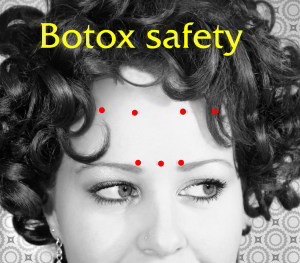Unusual Botox Treatment For Cluster Headache
This is Botox treatment like you’ve never seen before, and it could help patients with cluster headaches fight back.
Using Botox (botulinum toxin) for cluster isn’t new. Injections have been given to patients with varying success (take this study as an example).
But a unique treatment using Botox, if successful, could change the way we treat cluster in significant ways.
How it Works
Erling Tronvik and Dr. Daniel Bratbak at the Norwegian University of Science and Technology (NTNU) have developed a system designed to deliver botulinum toxin directly to the sphenopalatine ganglion, a bundle of nerve cells behind the nose. And the treatment doesn’t require surgery.
A press release from the NTNU explains:
The gear they have developed looks a pistol with a very thin barrel, just the thickness of a knitting needle. The barrel is inserted up through the nose of the patient, and by passing through a natural hole in the nasal wall, the mouth of the barrel comes to a bundle of nerves behind the sinuses.
The surgeon pulls the trigger of the pistol, which shoots a dose of Botox to the area around the nerve bundle. The whole process takes about a half-an-hour.
Could this non-surgical procedure actually fight cluster more directly and provide significant relief? And if it does, could it help patients with other types of headache as well?
Will it work?
This treatment is brand new, and patients are still being recruited for a trial. So we have to speculate – could it work?
The sphenopalatine ganglion has been a target for cluster research for a long time, because it is an important playing in a cluster attack. It’s also important in other types of chronic pain. Similar treatments are being used, such as the SphenoCath.
Although some patients have found relief through surgical treatments directed at the nerve cluster, these types of treatments haven’t yet found widespread acceptance.
It is true that Botox seems to impact pain messages sent through nerves. Could a more direct approach work better than traditional injections?
It doesn’t seem like Tronvik and Bratbak are sure, and it’s unclear why they have chosen this approach.
Dr. Alexander Mauskop from the New York Headache Clinic expressed his skepticism earlier this month, concluding,”Until we have some evidence that this treatment works we have to work with the standard approaches to cluster headaches, which include, occipital nerve blocks, oxygen, a course of steroid medications, sumatriptan (imitrex) injections, verapamil, lithium, and other drugs.“
As with any new treatment, we simply have to sit and wait. But we always hope that a new and unique treatment may help cluster headache patients, who suffer from one of the most intense pain disorders in existence.



